Hi Readers, I hope you are all well, doing your best in your fields, and learning new things.
Basic electronic components(which we are going to discuss today) are the building blocks of electronic circuits and understanding their working is crucial to predicting the circuit’s behavior. These small but powerful components make the circuit’s foundation and assist other components, resulting in the desired output.
Usually, these basic electronic components are packed into a discrete form having two or more terminals for the connection in the circuit. Understanding the role of basic components in the circuit is a perfect start to learning about electronic devices and projects. A great percentage of a circuit’s total output depends on the working, features, and connection of basic components used in it. Electronic components are divided into passive, electromechanic, and active components.
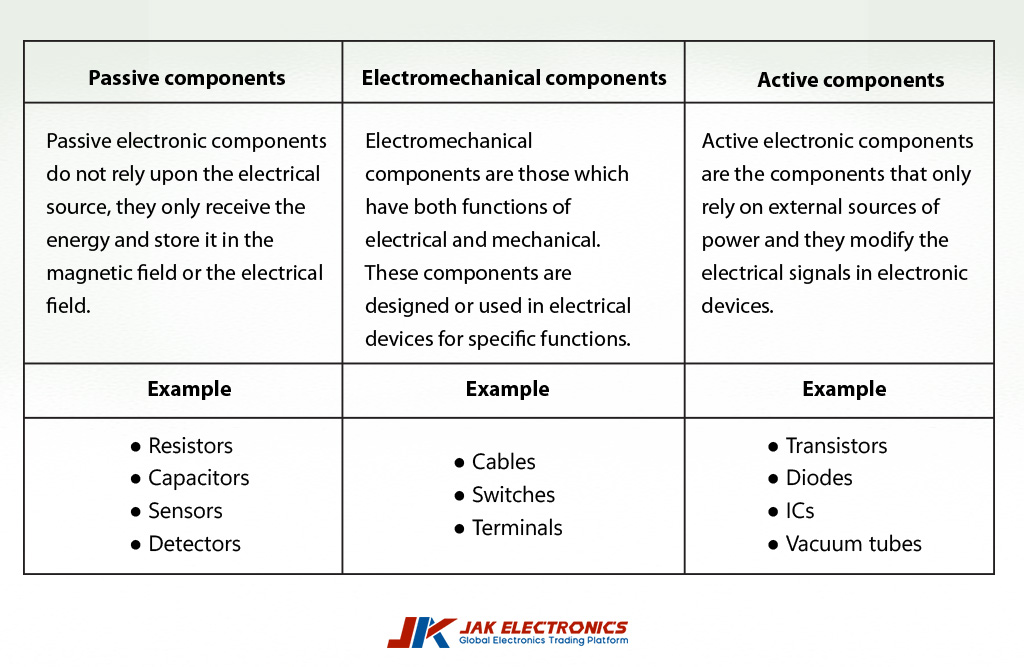
|
Passive components |
Electromechanical components: |
Active components |
|
Passive electronic components do not rely upon the electrical source, they only receive the energy and store it in the magnetic field or the electrical field. |
Electromechanical components are those which have both functions of electrical and mechanical. These components are designed or used in electrical devices for specific functions.
|
Active electronic components are the components that only rely on external sources of power and they modify the electrical signals in electronic devices. |
|
Example: |
Example: |
Example: |
|
● Resistors ● Capacitors ● Sensors ● Detectors |
● Cables ● Switches ● Terminals
|
● Transistors ● Diodes ● ICs ● Vacuum tubes |
The main purpose of this article is to understand the importance of electronic components their usage, functions, and their applications in our daily lives. Engineers, hobbyists, or developers manufactured different new electronic devices through understanding the exploration of basic electronic components. The components that are discussed in this article are:
❖ Resistors
❖ Inductors
❖ Transistors
❖ Capacitors
❖ Diode
❖ Integrated circuits
❖ Relays
❖ Field effect transistors
❖ Power sources and batteries
❖ MOSFET
❖ Fuses
❖ Sensors
❖ Crystals and Oscillators
❖ Potentiometer
❖ Cables and connectors
❖ Switches
The details of these basics are given there:
Resistors:
The passive electronic device that limits or allow the flow of current in the electrical circuit are termed resistors. It is essential to use them in electronic circuits because they divide the voltages, lower the flow of current, adjust the signal levels, and terminate the transmission lines.
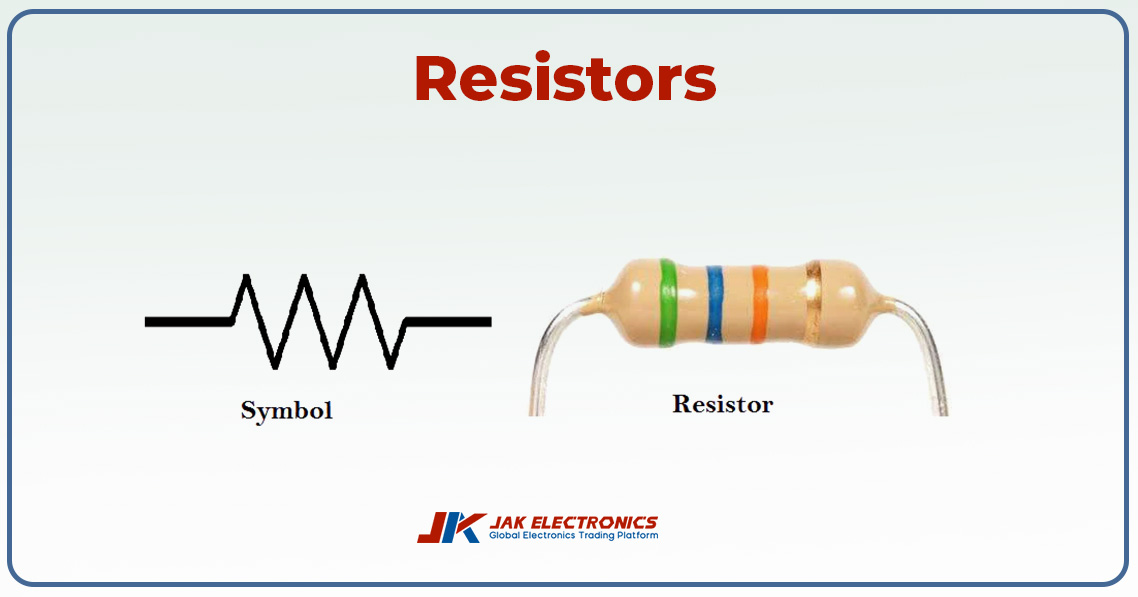
Key features and properties:
Resistance:
The amount of current that the resistor will limit is called resistance. It is measured in ohm. A higher value of resistance means more restriction of current.
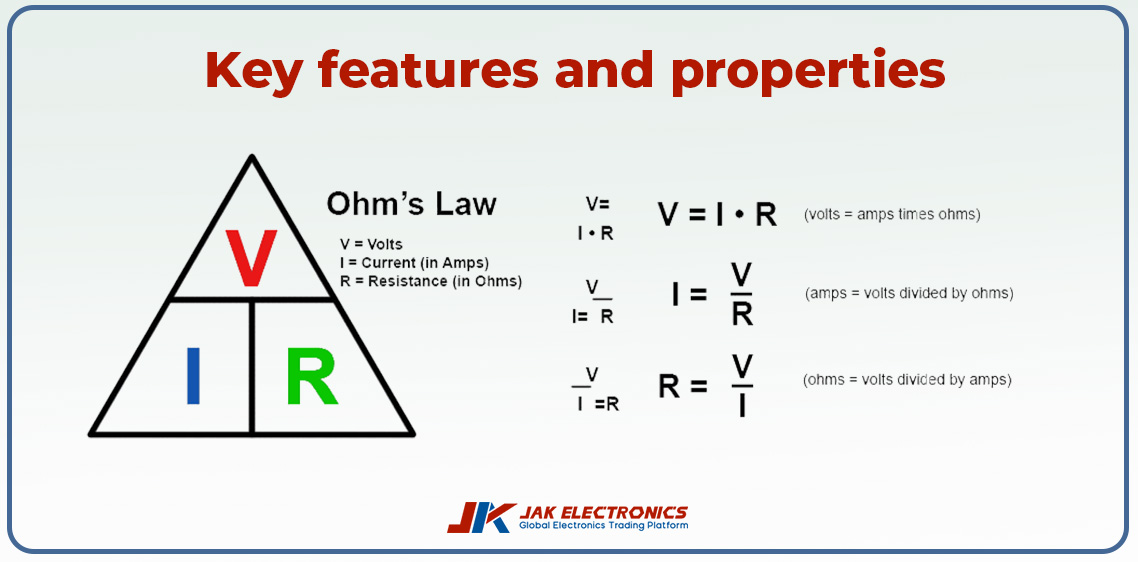
Power rating:
Resistors dispel the power in the form of heat and are measured in Watts (W). The power handled by the resistors without damaging the circuits is termed as power rating.
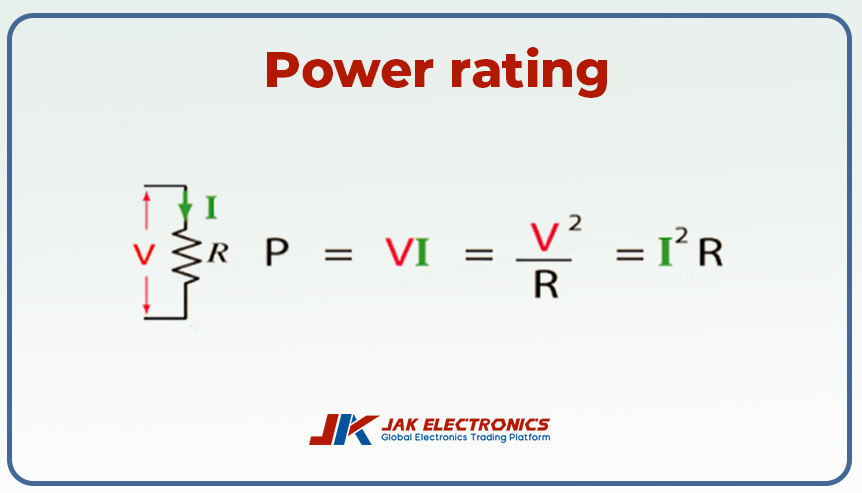
Tolerance:
The deviation of a resistance from a nominal point is called resistor tolerance. Some resistors are designed with extremely high tolerance. It is measured at 25°C. It is expressed as ±%.
Types of Resistors:
● Fixed resistor
● Photoresistor
● Variable resistor
● thermistor
Fixed Resistors:
Fixed resistors have fixed resistance value and their values can’t be changed.
Types:
● Carbon composition resistors: these resistors are composed of carbon powder and graphite paste.it is used as the general purpose circuits due to high tolerance and low accuracy.
● Carbon Film Resistors: these resistors contain a thin layer of carbon that is deposited on a ceramic substrate increasing its efficiency. It is mostly used in those applications where tolerance and stability are not essential.
● Metal film resistors: In these resistors a thin layer of metal is deposited. They are designed to provide high precision, good temperature stability, and produce low noise.
● Metal oxide film resistor: They are the same as metal film resistors but coated form metal oxide. It handles the temperature efficiently and also offers high reliability.
● Wire wound resistors: they are composed of a ceramic core, wrapping wire around it.
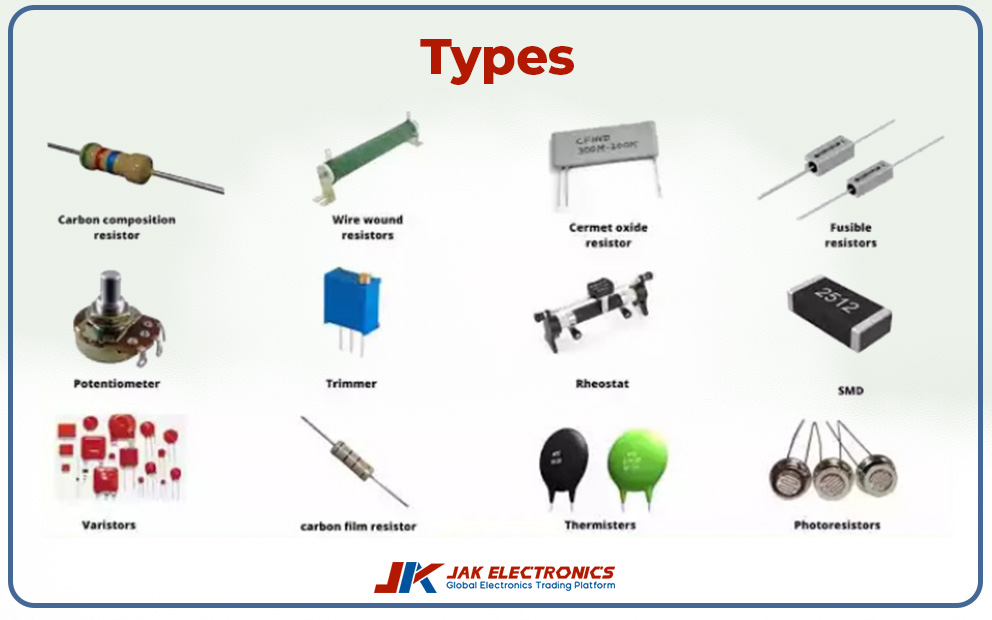
Variable resistors:
In variable resistors, the value of resistance is adjusted manually.
Types:
● Potentiometer: They are voltage dividers. The resistance can be adjusted by rotating a knob to control the volume and for tuning. It is a terminal device.
● Rheostats: It is two terminal resistors used two to control current. It is often used in light dimmers and motor speed controls.
Thermistor:
These are heat-dependent resistors. Resistance changes with the temperature change.
Photoresistors:
These are light-dependent resistors. Resistance changes with the change in light intensity.
Applications:
● It is used for current limiting to protect sensitive components.
● They are used as a voltage divider in sensors and analog circuits to meet the input range of microcontrollers.
● It is used for signal attenuation. Used in radio frequency modulation and volume controller by reducing the amplitude of a signal.
● It is used for temperature sensing.
● Used to set the bias of transistors in amplifier circuits.
To understand more about resistor
Resistor Basics: Types of Resistors
Capacitors:
It was the passive electronic components commonly used to release or store the energy in it.
Structure:
Capacitors were composed of two metallic plates. When voltage is applied through any external source, electrons accumulate on the plate making it negatively charged and other plates repel electrons gaining a positive charge. These plates are separated by dielectric which prevents the flow of charges from one plate to another. In this, a strong field is made to store energy. Dielectric acts as an insulating material between the two metallic plates. These insulating materials are ceramic, air, electrolyte, and maybe paper.
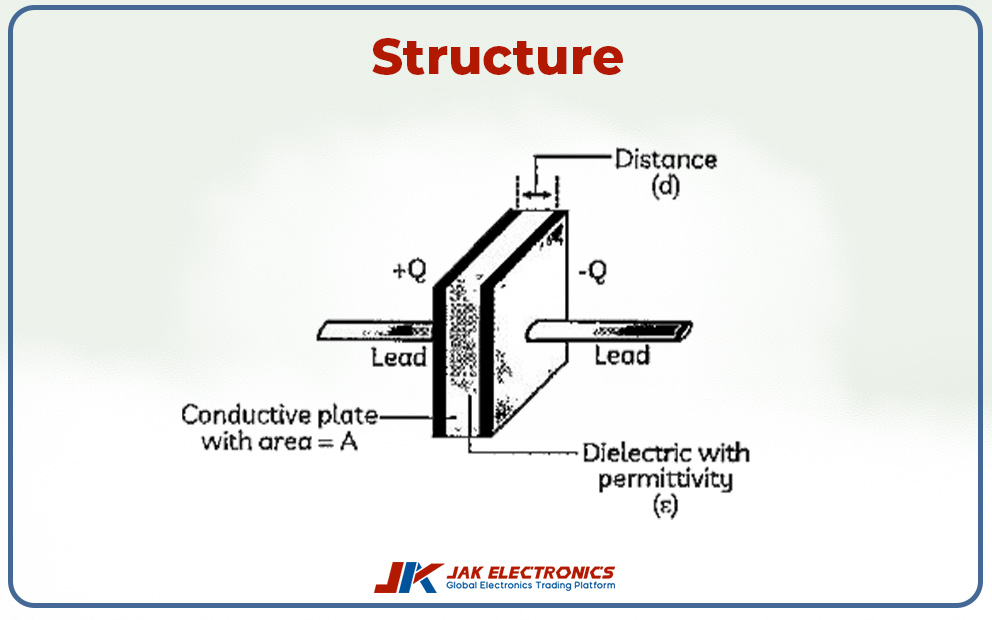
The capacitance of the capacitor increased through the insulating material or dielectric material.
Working:
● The voltage when applied on the metallic plates then the charge that is stored in it makes one metallic plate negative and the other positive. Dielectric prevents the flow of charges between the plate.
● Capacitors release energy when the external circuit allows the dielectric to become conductive. Electrons from the negative plate start moving toward the positive plate, making both plates neutral.
● In this way capacitor releases energy.
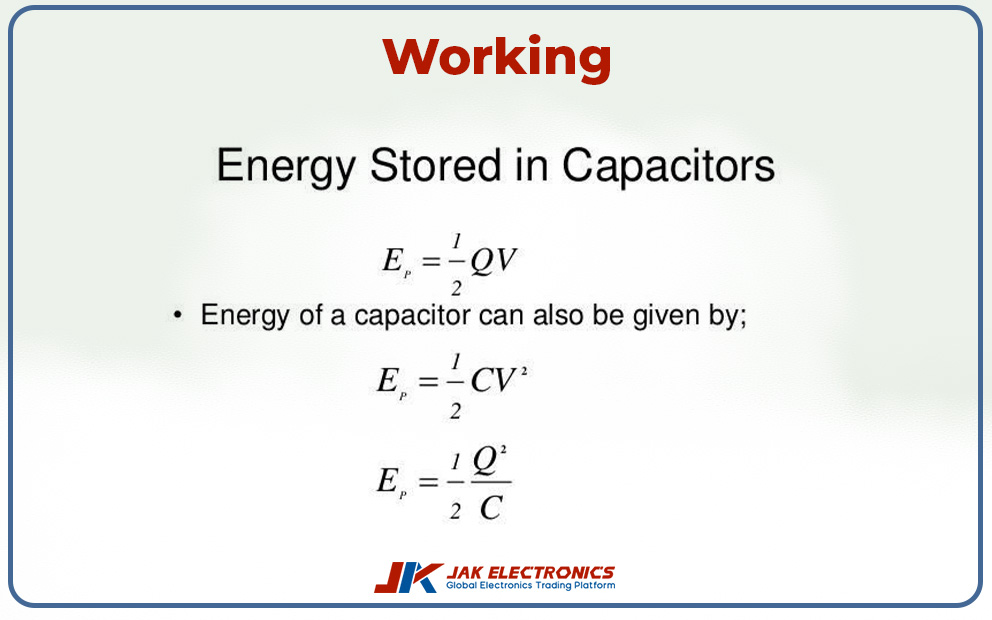
Properties of Capacitor:
The capacitance of the capacitor depends upon some factors that are given there:
Capacitance:
The capability of the capacitor to store energy is termed capacitance, measured in Farads ( F) and it is represented through the symbol C.
The formula that is used to measure the capacitance is:
C=Q/V
There,
Q represented the number of charges stored on metallic plates.
V represented the voltage.
Capacitance is usually measured in smaller units such as picofarad, microfarad, and nano farad because the farad is the larger unit to measure capacitance.
Rated Voltage:
It is the maximum amount of voltage that a capacitor can handle to work. If the voltage exceeds these limits, the dielectric fails to perform functions. It may cause a short circuit or explosion.
The capacitors are labeled with their rated voltage. The capacitors with high-rated voltage are more efficient. This property of the capacitor depends on the dielectric medium and its thickness.
Equivalent series resistance:
It is the internal resistance of the capacitor. It is the total resistance of the capacitor which causes heat dissipation. The ideal capacitor has zero ESR but no capacitor is perfect.
The lower the ESR higher the value of capacitance.
Dielectric strength:
The maximum electric field dielectric material can handle without breaking is called dielectric strength. Highly efficient capacitors come with high dielectric strength.
Types of Capacitors:
The types of the capacitor directly depend upon the dielectric or insulating material.
● Ceramic capacitors ( ceramic used as a dielectric or insulating material)
● Film capacitors (contains plastic film as a dielectric material)
● Tantalum capacitors (contains tantalum as dielectric material and are polarized)
● Electrolytic capacitors(used electrolyte as dielectric material)
Applications:
Applications of the capacitors are the following:
● Capacitors are used in medical equipment, to give rapid pulse to set the heart rhythm.
● Used in automobiles to store and release energy when brake is applied.
● In automobiles and communication devices, capacitors are used to filter frequencies.
● They are used to stabilize voltages for the smooth working of devices.
● Capacitors along with resistors are to set time intervals in circuits ( blinking lights).
● They are in radios to shape sounds by blocking certain frequencies.
● Used in fluorescent and LED lights to reduce flickering and improve power quality.
To understand the Capacitor symbols?
Vist: A Guide to Understand Capacitor Symbols
Inductors:
The two-terminal electrical component, that changes the energy and the current stored in it into the magnetic field when the current can flow in it. Inductors are passive electrical components that store or release energy. They are insulated wires wound around a core like iron, ferrite, and air.
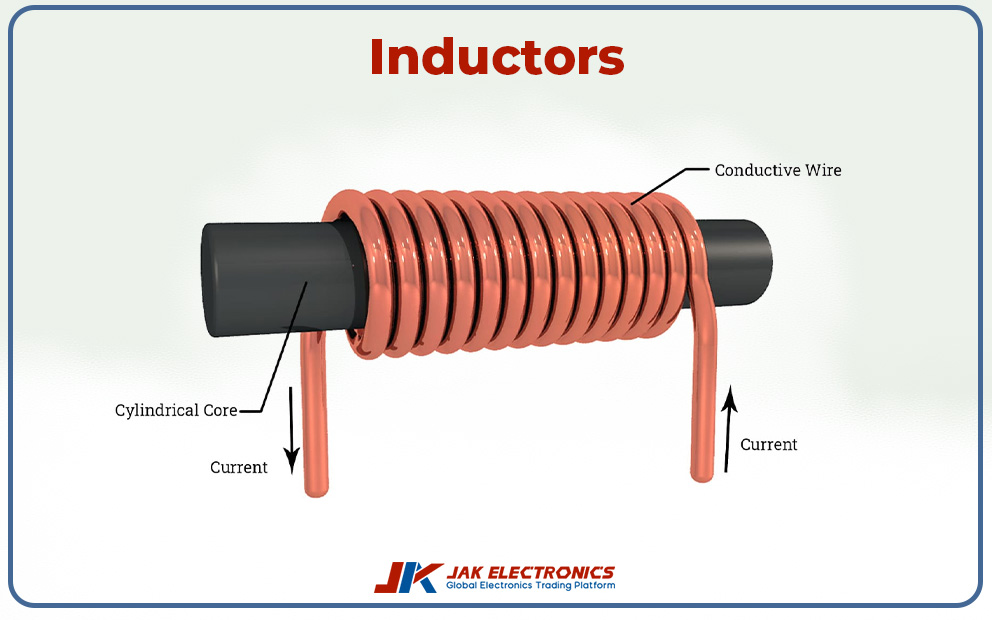
Key Features and Properties:
Inductance:
Inductance is the ability of an inductor to resist the current in the magnetic field. The higher the value of inductance, the higher the opposition in current. It depends upon the factors like number of coil turns, the material of the core, and coil geometry.
Resistance:
The resistance offered by an inductor to an alternating current is known as reactance. It varies with frequency. It is calculated by using the formula where f is frequency measured in hertz and L is inductance.
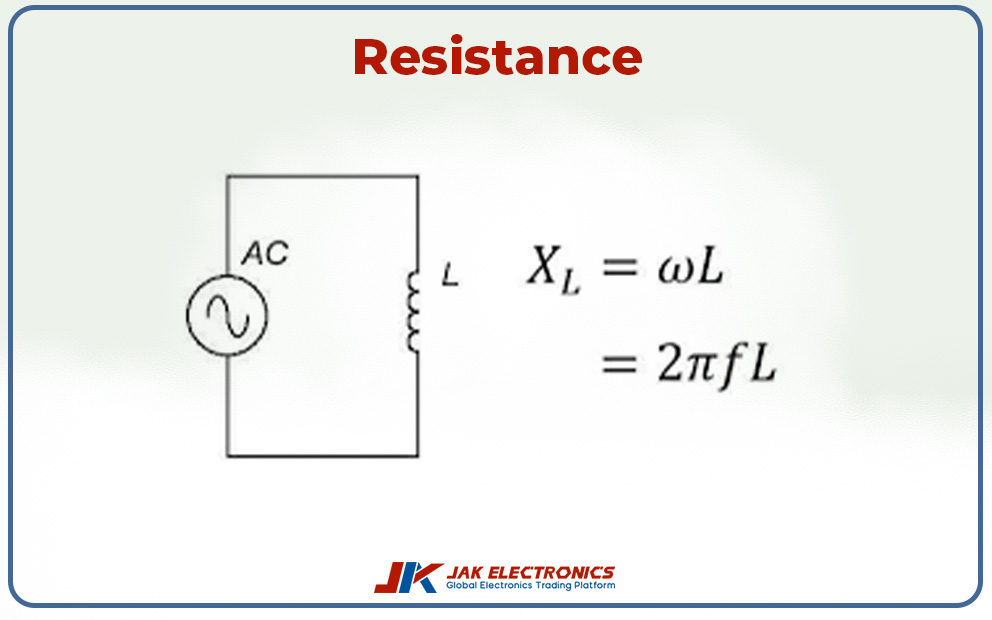
Reactance increases with the increase of frequency and decreases with with decrease of frequency. It blocks the higher frequency signals effectively.
Quality Factor:
The quality factor(Q factor) is the efficiency of an inductor. A higher Q factor means lower losses, which makes them ideal for higher-frequency applications.
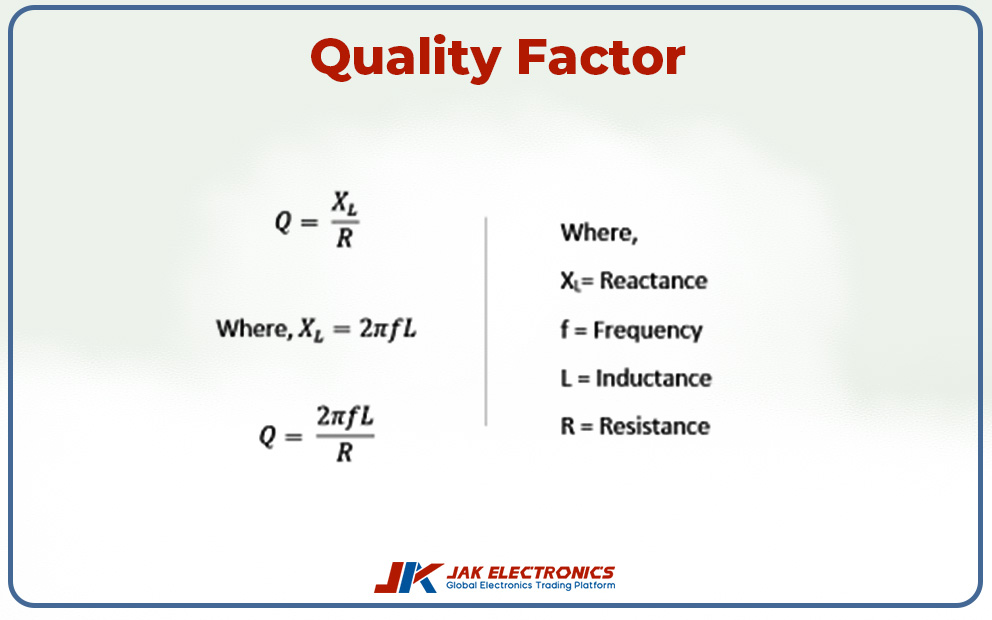
Saturation Current:
Every inductor has a maximum current limit which is called saturation. Beyond this limit, the core material if present cannot further magnetize and it also reduces the value of inductance making its performance low.
Types of Inductors:
On the basis of the type of core material which influences the inductance of an inductor, they are categorized as follows:
1. Iron Inductor:
These inductors are made with an iron or laminated steel core. They have excellent performance in high frequency because they have high resistance to current, high permeability, and low eddy current losses.
These inductors are used in low frequencies like power supply, audio equipment, and transformers.
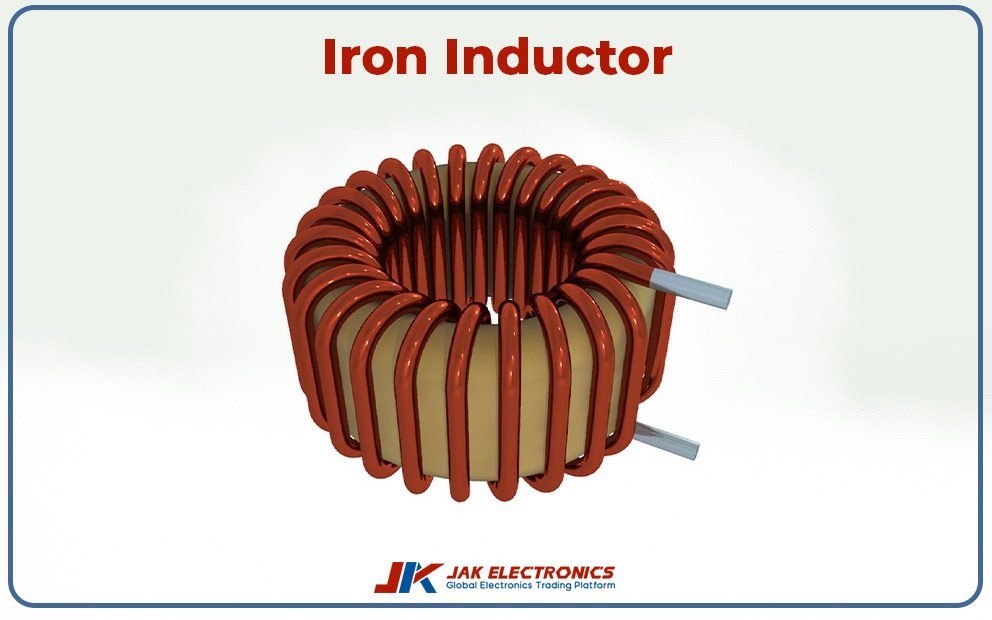
2. Air-core inductor:
The air core inductor contains air to store energy in the magnetic field. They have low inductance values. These inductors are self-sustaining because they do not need any ceramic or insulated material for structural support. They can perform their best function in high-frequency devices like radio receivers and TV.
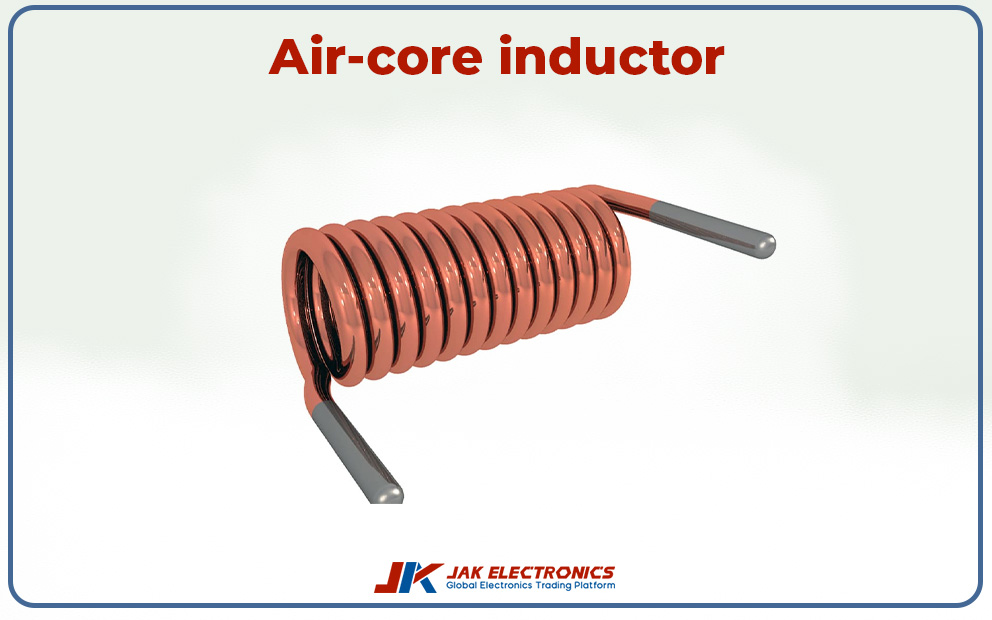
3. Toroidal inductors:
These are the inductors in which wire is wounded in close loops around the ferrite core. Due to close loops they produce a strong magnetic field resulting in high inductance. They are used in switch regulators, medical equipment, etc.
Ferrite-core inductor:
Inductors that are made by coiling wire around a ferrite core are known as ferrite-core inductors. Ferret material is made by mixing iron oxide with a small percentage of other metals like copper, nickel, or magnesium providing a temperature between 1000 to 1300 degrees Celsius. They have low eddy current loss at high frequencies and have high electrical resistivity.
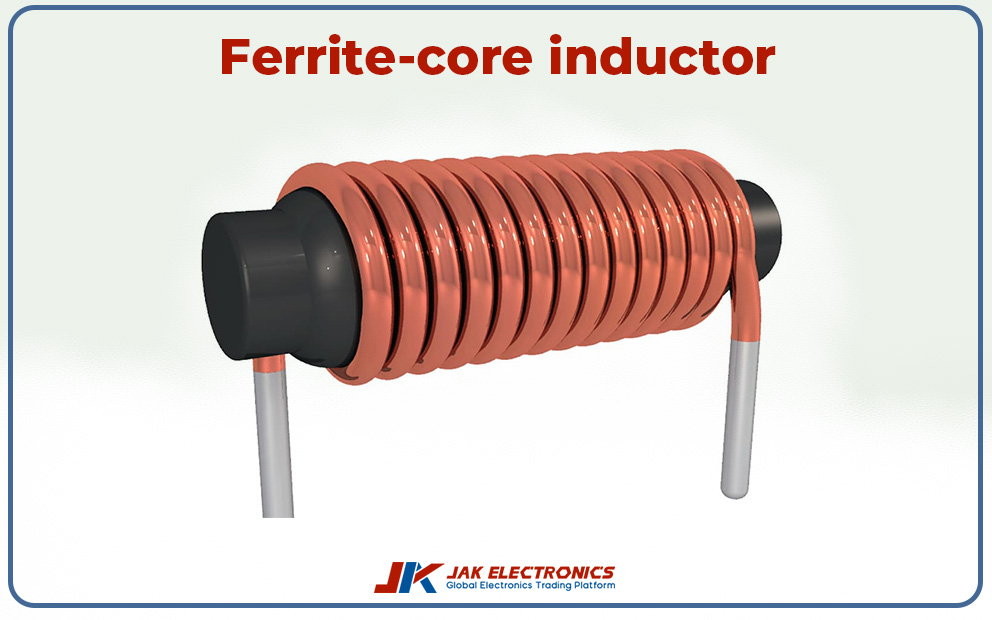
Applications:
● Inductors are used to generate heat in conductive materials for applications like welding, industrial metal melting, etc.
● Used in automobile applications as inductive sensors for detecting position, speed, and proximity.
● Used in wireless charging and harvesting energy.
● It stores and releases energy in DC-DC converters and switching power supplies, helping them to maintain steady output devices like computers and industrial equipment.
● In radio equipment, it is used as a filter that allows and blocks specific frequency ranges.
● It is used in chokes to suppress high-frequency noise.
Diode:
The semiconductor device that allows the current to flow only in one direction is termed a diode.
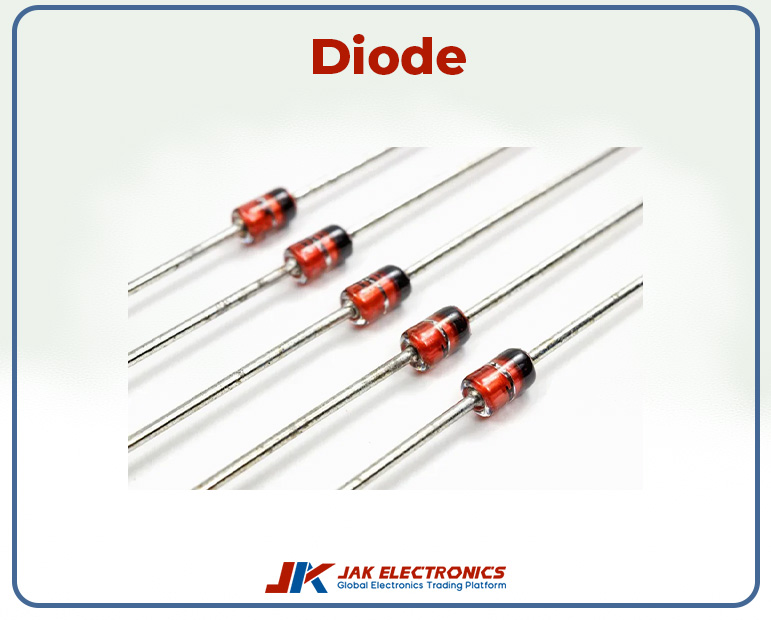
It strictly resists the flow in the opposite direction. It is commonly used for signal limiters, rectifiers, signal transmitters, or voltage regulators because it is a terminal electronic device. It is represented through the arrow in the direction where the current flows. It is commonly composed of germanium, gallium arsenide, and silicon.
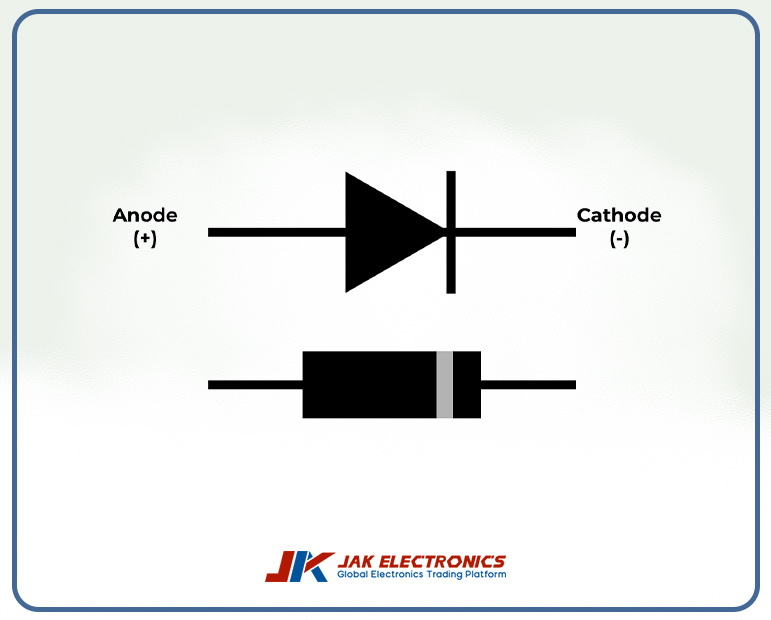
Characteristics of Diode:
Unidirectional conductivity:
The current that flows from the anode to the cathode in one direction is termed as the unidirectional conductivity.
Forward bias:
The current flows in a forward direction only when the anode is connected to the positive terminal of the battery and the cathode to the negative terminal of the battery.
Reverse bias:
When polarities are reversed the flow of current will be blocked, with few exceptions like zener diodes.
Forward Voltage Drop:
The minimum voltage a diode needs for the flow current is called the forward voltage drop. Its value is 0.7 for silicon diodes and 0.3 for germanium diodes.
Current Rating:
Each diode can handle voltage to a certain limit which is its current rating. If it exceeds, the diode may get damaged. High-power diodes are designed with a high current rating.
Types of Diodes:
PN Junction Diode:
It allows current to flow only in one direction. It is used as a rectifier to convert AC to DC power supply.
Zener Diode:
It is a special type of diode designed to allow current in the reverse direction only when a specific set of reverse voltage(zener voltage) is reached.
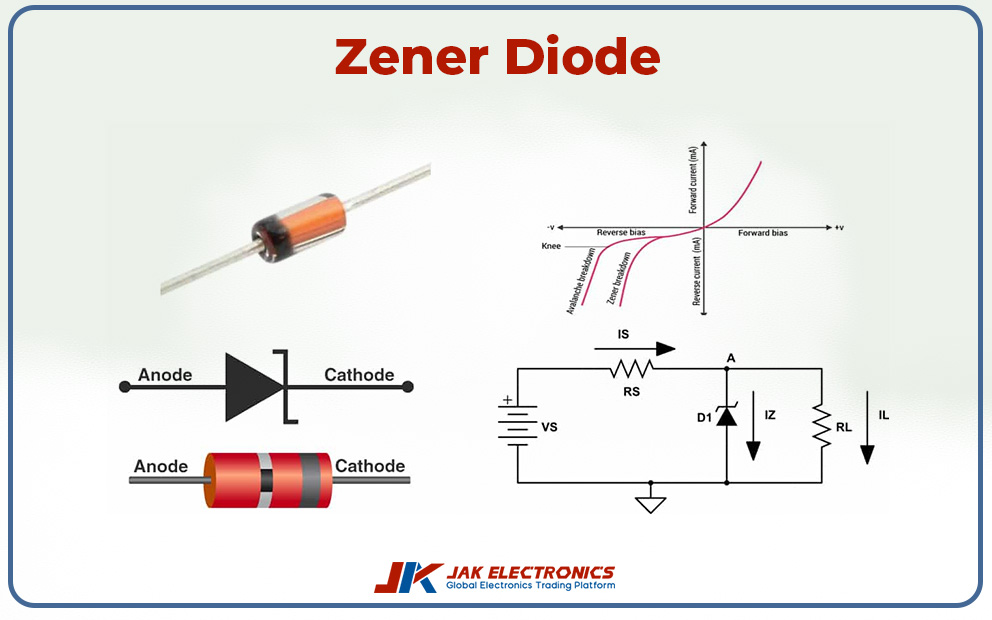
Light Emitting Diode:
It is designed to emit light when the current flow is in the forward direction. It is commonly used in indicators, displays, and lighting.
Photodiode:
A photodiode is a light-sensitive semiconductor diode that produces current when exposed to light. It is used in remote controls, smoke detectors, barcodes, and position detectors. Solar cells are also a type of photodiode.
Applications:
● Diodes are used in rectifier circuits, converting AC to DC power in power supplies.
● Diodes (zener) are used to clamp voltages, in this way they stabilize and protect circuits.
● They are used as demodulators to extract signals from high-frequency wave signals, especially in AM radios.
● They are used to make diode logic gates for OR and AND functions.
Transistors:
Transistors are cardinal semiconductors, that are commonly used in amplification or switching. Transistors play a crucial role as a major building block in electronic circuits and or used in general or advanced electronic devices. Its main aspects, types, applications, and examples are given there.
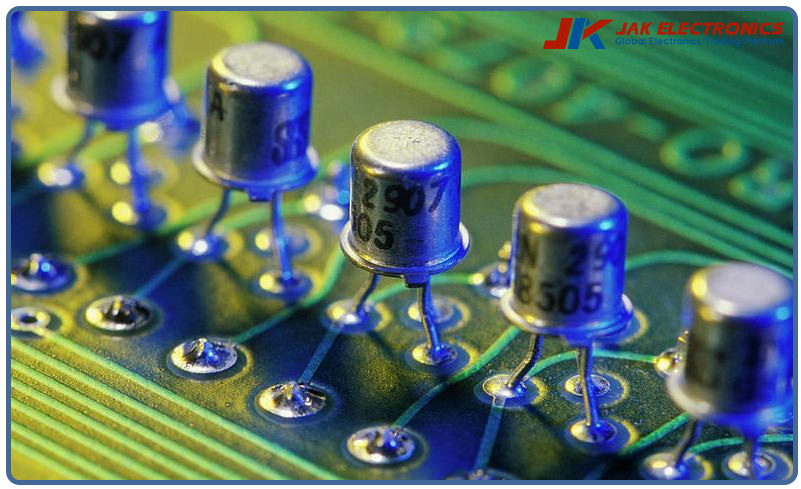
Main features of Transistors:
● Transistors are composed of semiconductor material mostly germanium or silicon it allows the transistors to control the flow of current in the circuit.
● Transitions are used as amplifiers because it amplify the electrical signals or as electrical switches, due to this hallmark it is used in analog or digital circuits.
● Transistors consist of three terminals, which are the base, emitter, or collector.
1. Operations of transistors controlled by base
2. Through the collector terminal the current flows into the power source.
3. Through the emitter terminal current leaves from the transistor.
Types of Transistors:
Types of transistors are given there:
IGBT:
● It comprises the MOSFET or BJT components so it is a hybrid transistor.
● It is popular for its fast switching and its high-efficiency power
● Used mostly in high-power electronic devices such as power inverters.
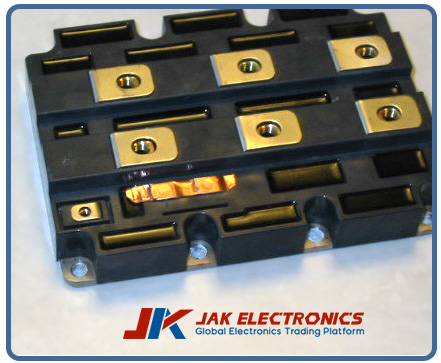
BJT:
● It is popular due to its two types which are NPN or PNP.
● Both the hole charge and the electron carriers operate through it.
● Used for amplifying the electrical signals.
● Three terminals control the flow of current.
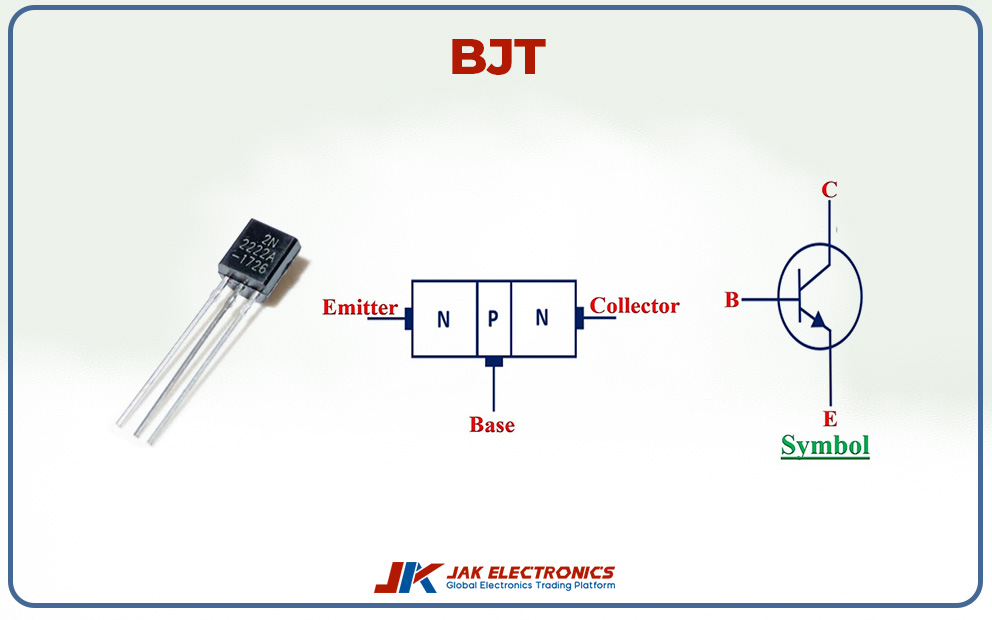
FET:
● It includes the drain terminal, gate, and source.
● Used only one type of charge carries at a time.
● It consumes low power and does faster operations so used for switching.
● Metal oxide semiconductor FET is used primarily in digital circuits and it is the most common type of FET.
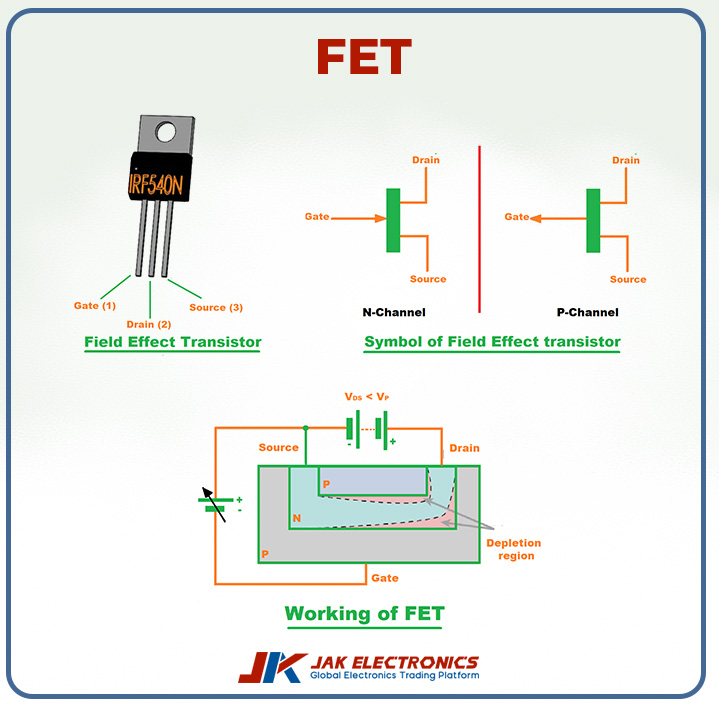
Characteristics of transistors:
● The current gain shows how much electrical signals, are amplified through transistors.
● The current and the voltage handled by the transistor without any damage determined through power rating.
● Transistors can fastly do switch on and off so it is perfect to use in digital electronics.
Application of transistors:
Major applications of transistors that are used widely are given there:
● Oscillators
● Switching
● Voltage regulation
● amplification
Relays:
Electrically operated switches that are used to control the other circuit through one circuit with high power are termed relays. It is primarily used in these circuits where lower power is used to control or run high-power circuits like as, controlling lights or turning on the motors in numerous machines.
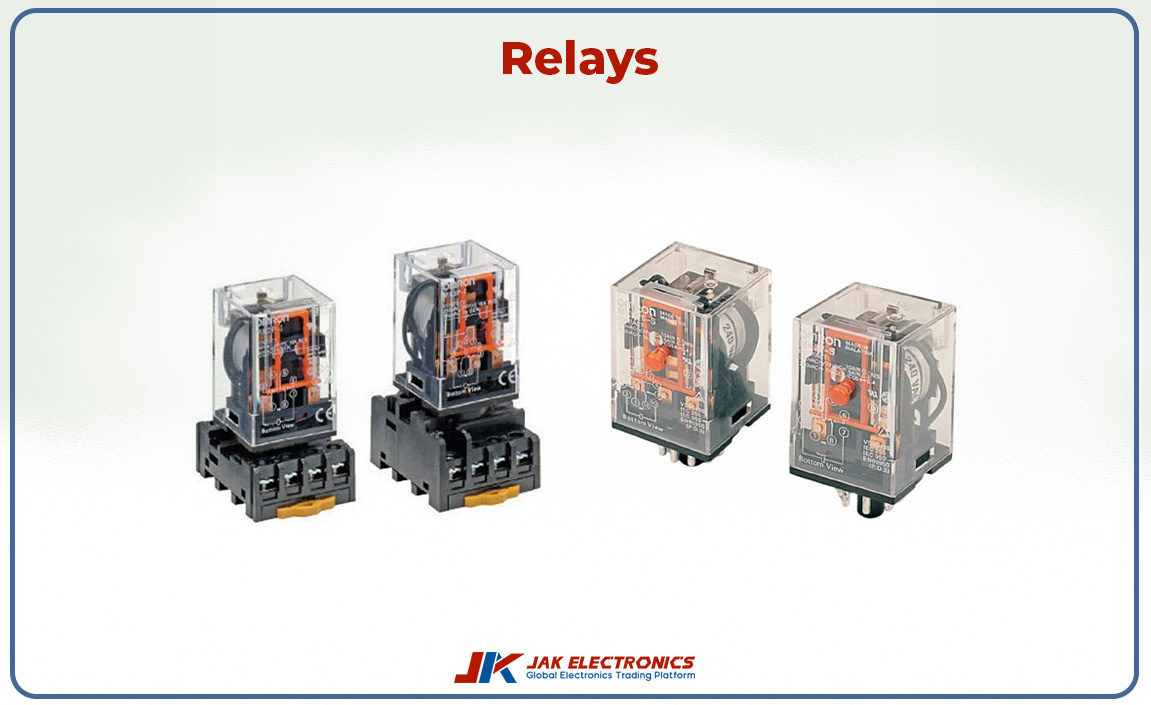
Working of relays:
Triggering of Control Circuit: The relay is a switch, and when we apply a small control voltage to its coil, it produces a magnetic field.
Movement of magnetic field: The above-mentioned scenario activates an armature that moves according to the condition of the relay contacts.
Moving Contacts: The armature motion shifts the relay contacts, leading to either opening or closing of the load-connected circuit.
Types of Relays:
Electromagnetic Relays:
● The most common kind, an electromagnet (part of the relay) is used to operate the mechanical switch.
● SPST, SPDT, and DPDT configurations
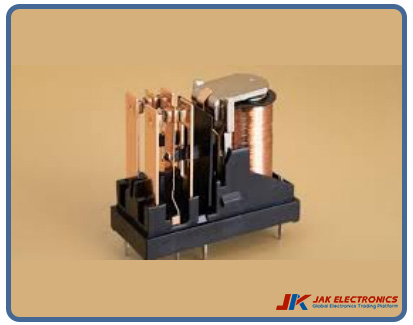
Solid-State Relays (SSRs):
● Power efficient, no moving parts used for switching use semiconductor components
● More costly, but physically faster and with a longer life than electromagnetic relays; Formerly alphabetically also less sedimentary.
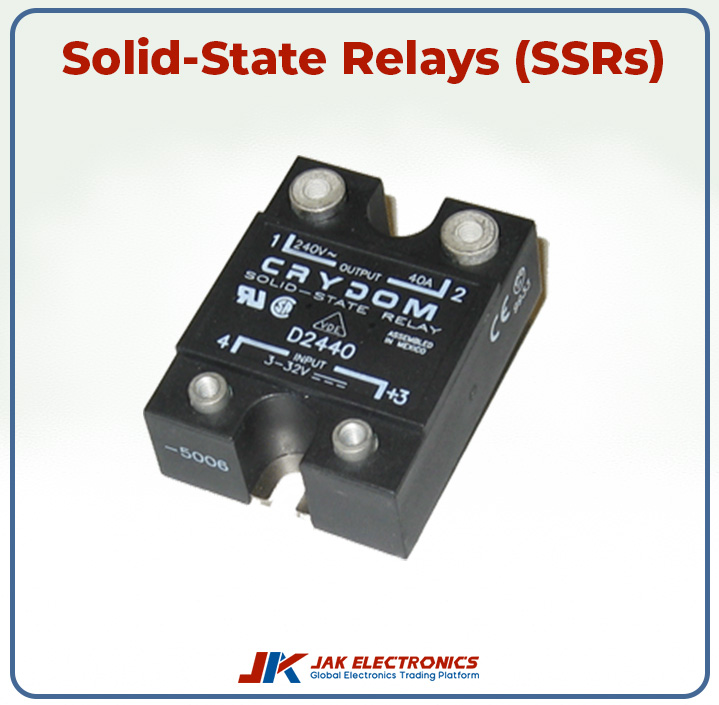
Reed Relays:
● Magnetized reed switch (inside glass tube casing) Very small relay.
● Powered by a minuscule magnetic field and is seen in low-power applications.
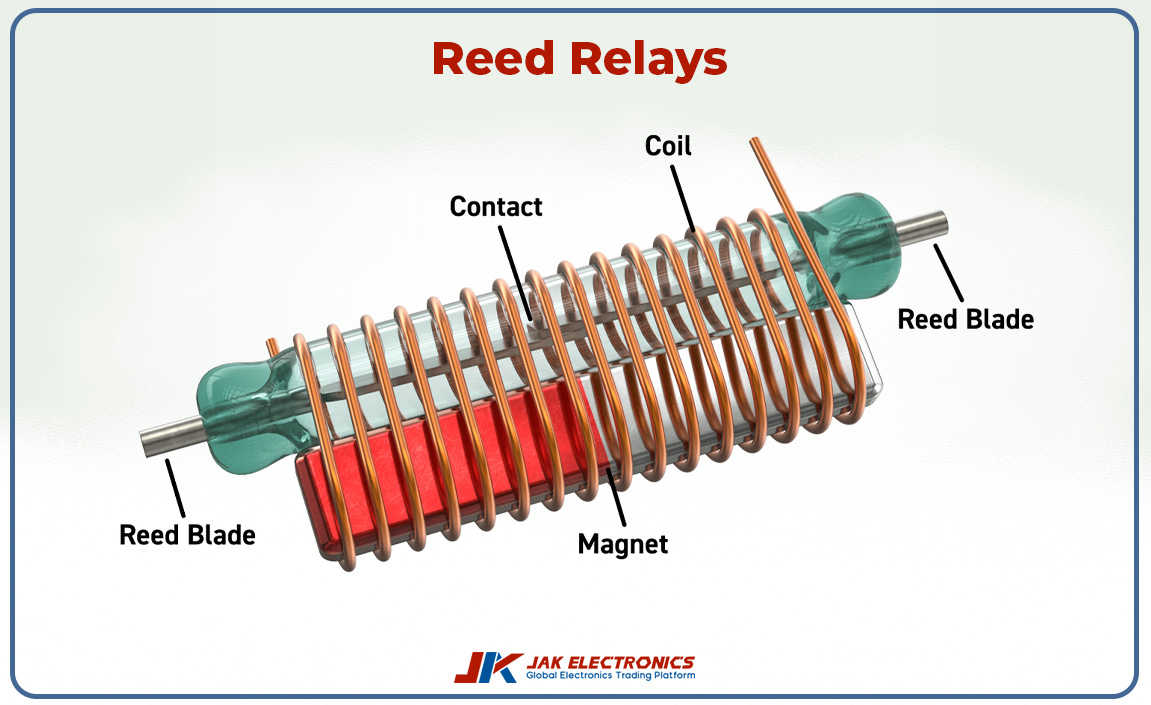
Latching Relays:
● Stay in the (OFF/ON) position even after the control signal is removed.
● Useful in applications where energy conservation is beneficial as they do not need a constant current to stay stationary.
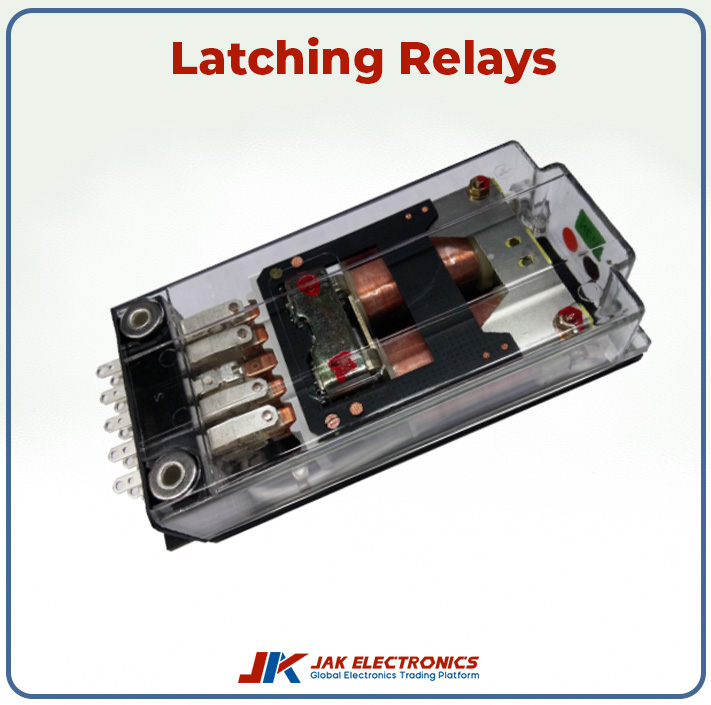
Thermal Relays:
Thermal Relays operate when the temperature changes, typically for protecting circuits from running too hot.
Key Characteristics:
Coil Voltage: The voltage needed by the relay is coil voltage.
Contact rating: The maximum current and voltage that the relay contacts can handle without damage.
Switching Speed: The time the relay takes to change its states from ~open1 = open2 with 100mV control voltage applied.
Applications of Relays
In automotive applications, for example, controlling lights, starter motors, and other high-power auto devices.
Home Appliances: For toggling the switch of big appliances such as air conditioners, washing machines & refrigerators.
Industrial Automation: Relays are used to control motors, conveyors, and other industrial equipment.
Power Protection Systems: the power to prevent overloads, short circuits, and other faults.
Connection and Data: Telephone exchanges, Computer networksData routing applications.
Example Relay Circuits:
Relay Motor Control Circuit: This lets a low-power microcontroller control a high-power motor.
Lighting Control: A relay-controlled circuit that enables high-power lights to be turned on with a low-power signal from a microcontroller.
Overload Protection Circuit: When temperature increases than a safe zone, the thermal relay switches the power supply.
Advantages of Relays:
Isolation: To isolate high-power circuits from low-power control beings.
Long Use: If we use electromagnetic relays correctly, they can perform a large number of cycles (up to several thousand).
Broad compatibility: It works with AC and DC loads that are either high or low voltage and makes it a great tool for users to measure at various settings.
Integrated circuits (ICs):
ICs are small electronic circuits that combine a bunch of components like transistors, resistors, and capacitors on one chip made from silicon. They form the basis of modern electronics, leading to more powerful, efficient, and smaller-size devices.
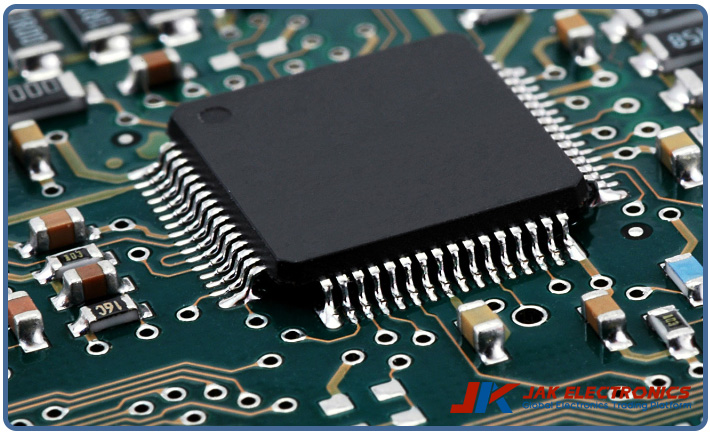
Integrated Circuits Main Features:
Miniaturization: Thousands to billions of components are connected and packed into a single chip reducing the size of entire electronic circuits.
Higher Reliability: Packaging of the ICs requires fewer connections (component to package) and sealing, which makes them mechanically more reliable.
● It uses very low power, and using such an IC will move the device since all parts are very small; this is why it saves a lot of energy.
Types of Integrated Circuits:
Analog ICs:
● Operate on continuous signals and are used in applications like amplifiers, oscillators, filters, etc.
● Ex: Op-amps, Voltage Regulators, Analog Comparators
Digital ICs:
● These are used to deal with discrete signals (binary 0s and 1s) and form the basis of digital devices.
● Sample: logic gates, microprocessors, memory chips, and microcontrollers.
Mixed-Signal ICs:
● Analog and digital functions can be combined on one chip so that they are able to process both analog as well as digital signals.
● Widely used in several communication devices such as cell phones and audio equipment.
Microcontrollers (MCUs):
● Highly integrated tiny computers that integrate a CPU, memory, and other peripherals on the same chip.
Fuses:
A device that protects the electrical circuit from insane currents, which results in overheating, harm to appliances, or even blazes is called a fuse. It is used for various applications, from the wiring of simple households to complicated industrial systems.
While fuses are one of the earliest devices in use, their applicability remains powerful due to their credibility, cost-efficiency, and clarity.
Background:
The concept of the fuse is regarded by Thomas Edison, who invented it as a section of his work on electrical circuits. Edison’s invention was primarily intended to protect lighting circuits from insane currents that cause blazes. In earlier days of copper-wire fuses, a range of today's options from compact automobile fuses to strong high-voltage fuses, supplied specialized solutions for different environments.
Types:
Some common types of fuses are :
● Blade fuses
● Cartridge fuses
● Specialty fuses
● High-voltage fuses
● High-voltage fuses
Blade fuses:
It is mostly used in automotive, they contain two metal prongs that are fixed into a socket. Their ratings are color-coded, which makes it easy to select the suitable fuse. Blade fuses are compressed, effective, and protect electronic vehicles from power surges and short circuits.
Specialty fuses:
● Thermal fuses: Instead of responding to current, thermal fuses explain heat and break the circuits when the temperature exceeds a definite threshold, which makes them costly in heat-sensitive devices like coffee makers and blow dryers.
● Time-delay fuses: These fuses are constructed to oppose short current spikes, such as the influx current that occurs when motors initiate, without blowing.
Cartridge fuses:
Cylindrical fuses contain metal bodies with beneficial caps at both ends, making them appropriate for different electronic appliances, wiring circuits, and power tools. They come in different sizes and formations, such as knife blades and ferrule-type.
Resettable fuses:
Unlike conventional fuses, resettable fuses replace themselves after the overburden clears. Once the deficiency is cleared, they reciprocate to their genuine state, making them perfect for circuits that necessitate repetitive protection.
High-voltage fuses:
Designed to oppose high voltages(such as in distribution systems and transmission), high-voltage fuses are more strong. They consist of arc-extinguishing resources that help to control the arc when the fuse shatters, an essential for high-power applications to ensure continual operations.
Applications:
● Automotive applications
● Industrial machinery
● Power Transmission and Distribution
● Consumers Electronics
● Household Electrical Systems
Sensors:
Sensors are the devices that get input from the changes in the physical environment and give output to other electronic devices. They detect physical phenomena and get input in the form of light, heat, temperature, moisture, motion, pressure, etc. It gives output in human-readable form, on electronic devices like a computer, so it can be processed further.
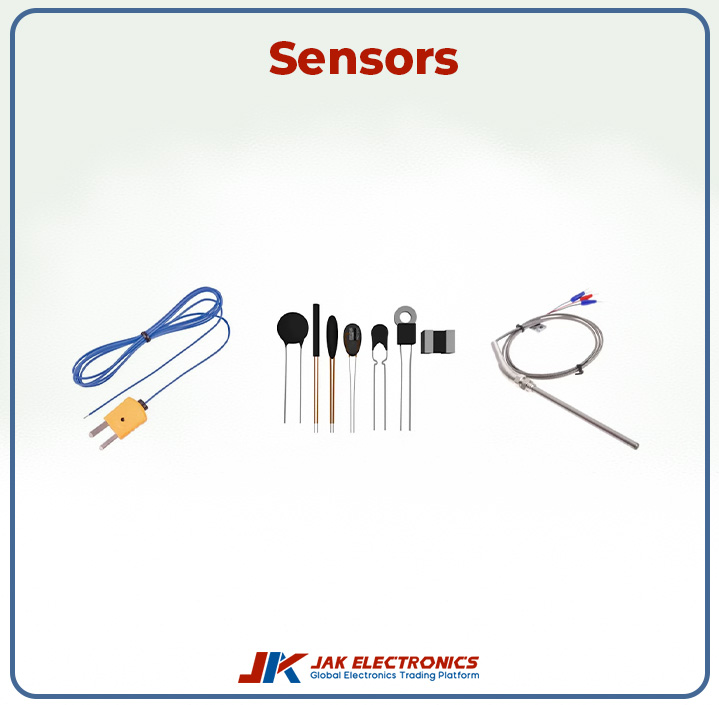
Categories:
There are multiple ways to categorize sensors. The most common way to categorize them is active or passive.
Active sensors:
Sensors that require an external power source to detect input and give output to electronic devices are active.
The best example of an active is an X-ray machine, it sends rays into your body and detects the energy that is reflected. Another example of an active sensor is a weather satellite because it also needs an external energy source to give information.
Passive sensors:
Sensors that do not need any external power source to detect and give output are known as passive sensors.
The best example of a passive sensor is the backup camera in cars used for parking. They alert us that the bicycle is behind the car. Thermal sensors and chemical sensors are also types of passive sensors.
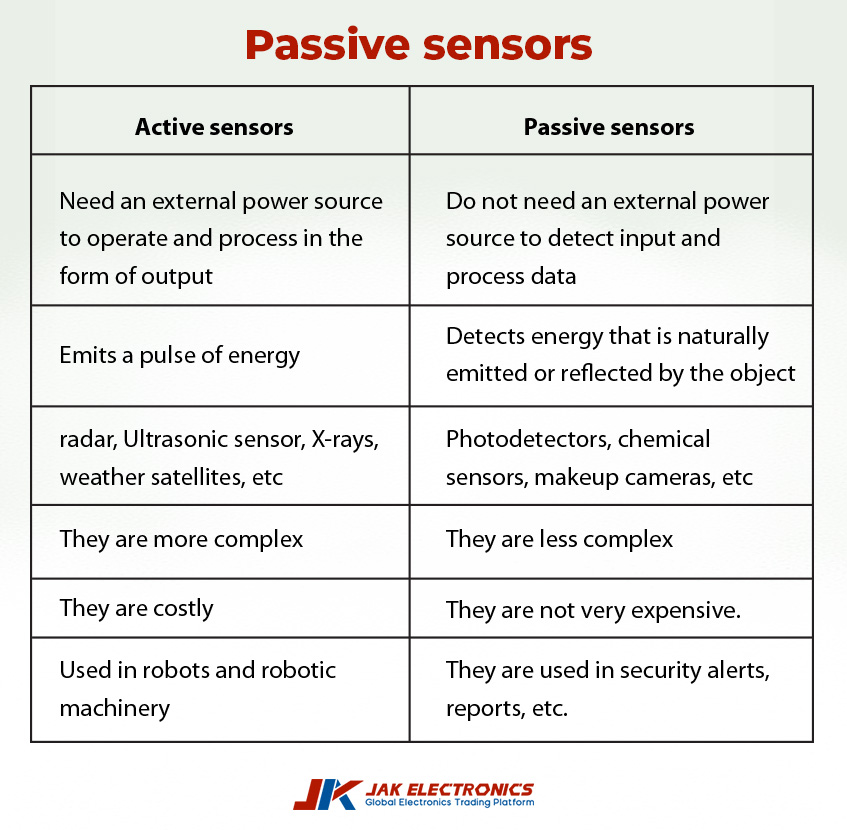
|
Active sensors |
Passive sensors |
|
Need an external power source to operate and process in the form of output |
Do not need an external power source to detect input and process data |
|
Emits a pulse of energy |
Detects energy that is naturally emitted or reflected by the object |
|
radar, Ultrasonic sensor, X-rays, weather satellites, etc |
Photodetectors, chemical sensors, makeup cameras, etc |
|
They are more complex |
They are less complex |
|
They are costly |
They are not very expensive. |
|
Used in robots and robotic machinery |
They are used in security alerts, reports, etc. |
Some sensors are both passive and active form. For instance, seismic and infrared sensors behave as active and passive.
Another way to categorize sensors is analog and digital sensors, based on which type of output they are producing.
Analog sensors:
Analog sensors give continuous signals that vary over time.
The best example is thermocouple sensors.
Digital sensors:
Digital sensors generate discrete digital signals in binary form(0s and1s). Now digital sensors are commonly used in industries replacing analog sensors.
For example, they are used to measure temperature, pressure, humidity, and many environmental phenomena.
Sensors are commonly categorized into many types which are discussed below.
Chemical sensors:
These sensors are used to detect the presence of chemicals in the medium which is either solid, liquid, or gas.
We use chemical sensors to measure the nutrient level of soil for the better production of crops.
Moreover, it is used for blood pH, alcohol in breath, and pH of acidity in the medium. They are used to detect the level of pollution in the environment.
Temperature sensors:
Temperature sensors are used to detect temperature and change in temperature as input.
A medical thermometer is the best example of a temperature sensor. Thermocouples, thermistors, and resistors are some types of temperature sensors.
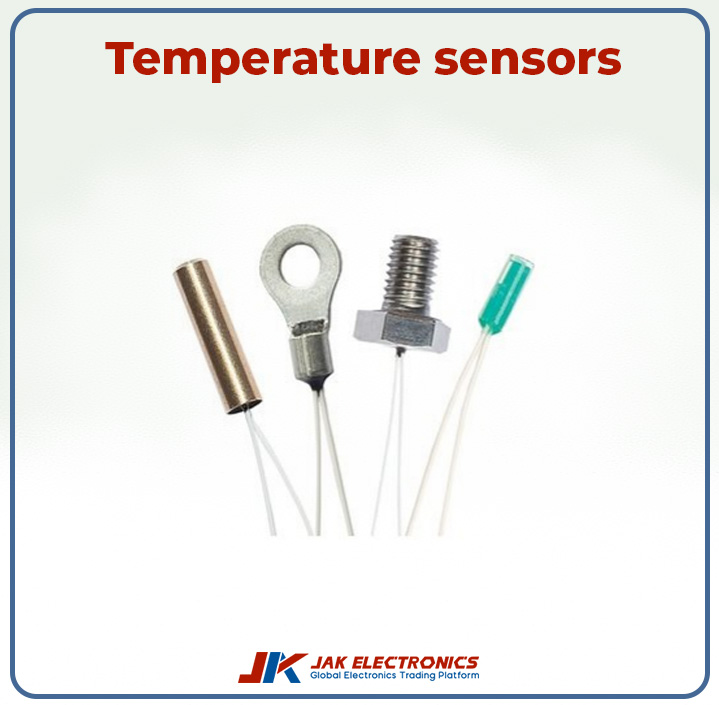
Pressure sensors:
They detect pressure and force as input to give data in human-readable form. Piezoresistive, electromagnetic, and optical pressure sensors are some types of pressure sensors. They have a wide range of applications in industries. They are used to measure pressure in tires and weather stations.
Potentiometer:
A potentiometer is a three-terminal electronic component that is used as an adjustable voltage divider. It is used to measure voltage or electrical potential. It is also known as pot or electronic pot.
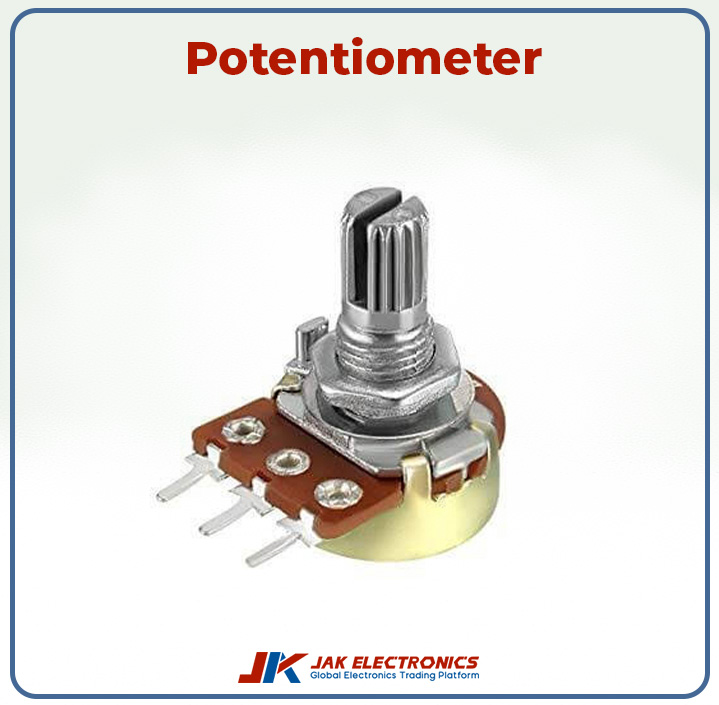
Components:
There are three components of the potentiometer.
Resistive Element:
The resistive element is often made of carbon, ceramic, or conducting plastic. The total resistance of the potentiometer depends on the resistance of the material. The resistive element provides the path to move the wiper on it.
Wiper:
It slides across the resistive elements. As it slides it varies the effective resistance. It gives variable voltage as an output.
Terminals:
A potentiometer typically has three terminals that are used for the following purpose.
Outer two terminals:
These two terminals are connected to each end of the resistive element. They represent the full resistance of the potentiometer.
Middle Terminal:
This terminal is moveable and slides between the outer two terminals. It gives output in varying voltage.
Knob or Slider:
It is the slider in the potentiometer used to move the wiper along the resistive track to control resistance.
Body:
It is the body of the potentiometer that holds all its components and protects them from any damage and contamination.
Types of potentiometer:
There are many types of potentiometers, and each has its specific functions and applications that are discussed below.
Linear Potentiometer:
In this potentiometer, the wiper slides straight and smoothly. It changes resistance in steps linearly and gives varying voltage in a linear pattern. It is used in light dimmers.
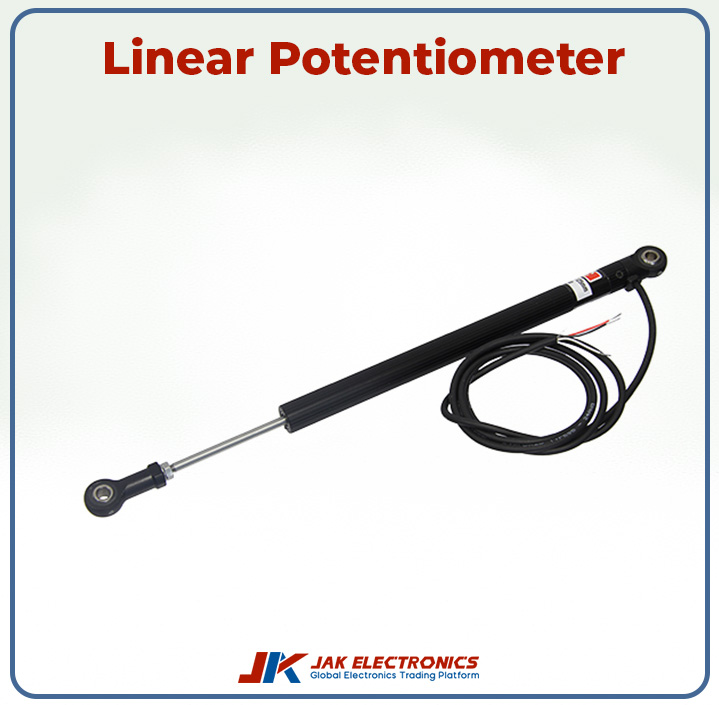
Rotary potentiometer:
A rotary potentiometer has a circular resistive track on which the wiper slides along with the turning shaft. It is a variable resistor that has a rotating knob to adjust the resistance. They have user-friendly rotational adjustments. They are used as volume controllers and in many other appliances.
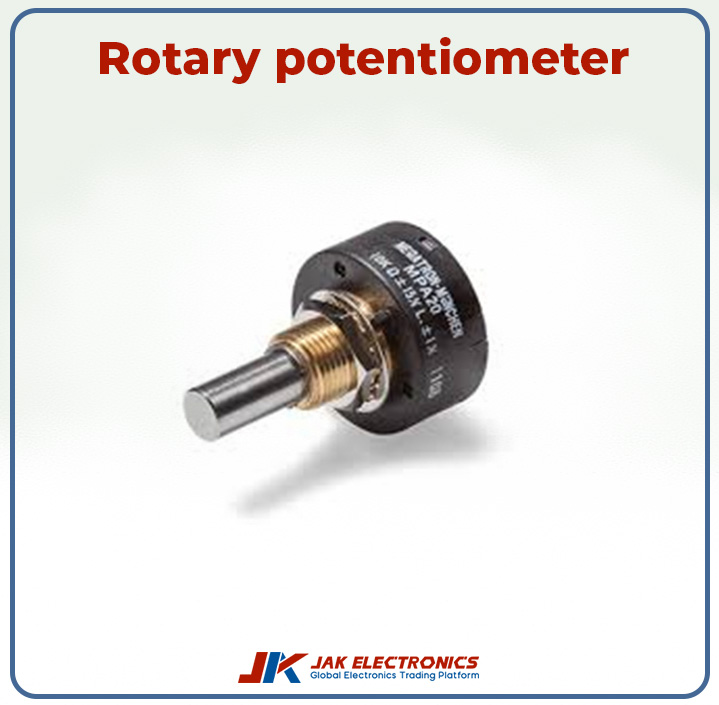
Digital potentiometer:
The digital potentiometer functions electronically via digital signals instead of mechanical movement. It gives discrete output using a microcontroller or computer. It has high precision and durability without moving its parts. It is used in automated systems and digital volume control.
Trimmer potentiometer:
It is used to calibrate electronic components and fine-tuning. Instead of regular adjustments, they are used for infrequent calibration. They have a variety of single-turn and multi-turn to control precisely. Radio receivers use trimmer potentiometers.
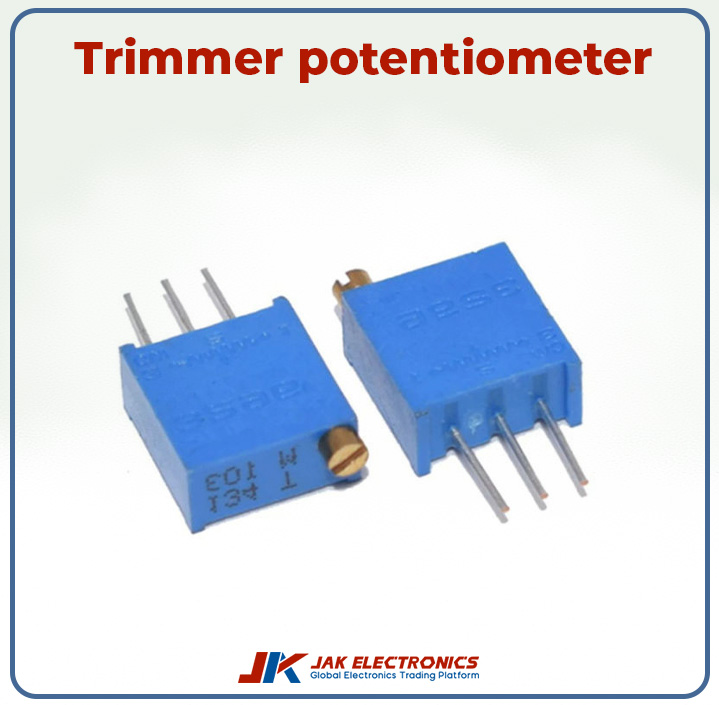
String potentiometers:
A string potentiometer is a linear position sensor. It has a flexible cord that moves along the resistive track when pulled or released. Its resistance is based on the change in position. It has wide applications in the automobile industry and robotics.
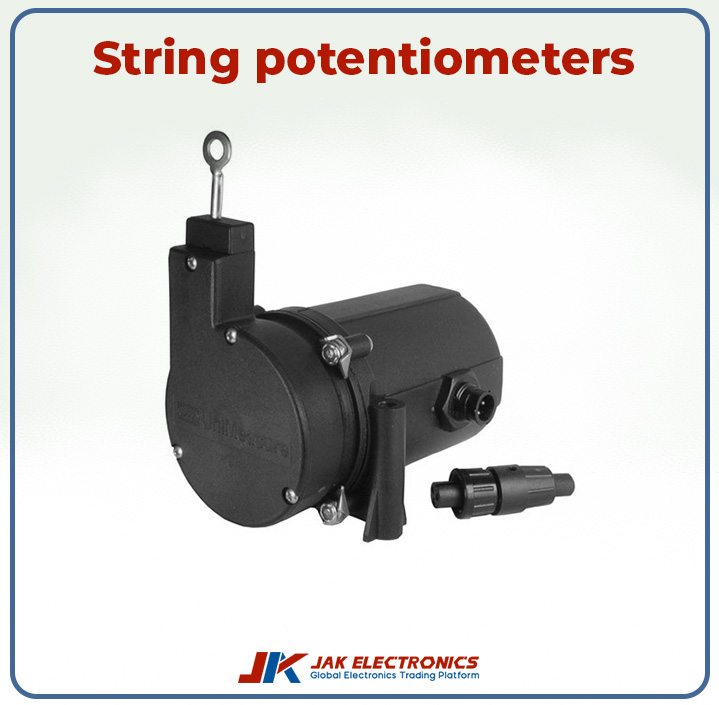
Applications:
The potentiometers have a wide range of applications in industries like robotics and many other appliances. Some of their applications are mentioned below.
● They are used to control volume in radios, speakers, and audio devices. Moreover, they are used to control tone by adjusting bass.
● They are used in dimmer switches to adjust brightness levels.
● Used in theatrical lights.
● Used in gaming consoles for controlling the joystick and for sensitivity adjustments.
● Used in home appliances like washing machines, stoves, ovens, etc.
● Perform functions in medical equipment.
● Adjust signal strength in network equipment.
● Used in automobiles and robotics.
Power source/ Battery:
A battery is a device that is used to store chemical energy and convert it into electrical energy by chemical reactions, providing electrical energy to electric devices for their functioning.
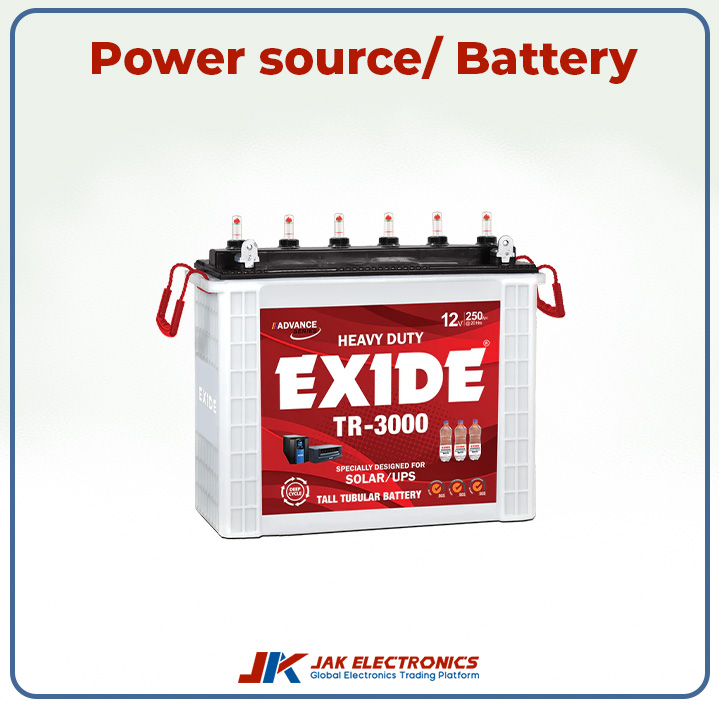
Invention:
They were invented in 1799 by Alessandro Volta. He theorized that electricity can be generated with the help of metals. He used zinc and copper metals with brine-soaked cloth. This great invention led to the foundation of modern electronic gadgets that are used in homes, offices, industries, and in every field of life.
Components:
Several components are essential for the functioning of a battery to convert chemical energy into electrical energy. These components are described below.
Electrodes:
Electrodes are metallic plates that gain or lose ions. One plate is the anode and the other is a cathode which is dipped in solution. These plates play a crucial role in generating electricity.
Anode:
An anode is a negatively charged electrode. It loses ions (oxidation) during chemical reactions. The material depends upon the type of battery. Often made of lithium or graphite. Provides power to the device when electrons flow from an anode to an external circuit.
Cathode:
Cathode undergoes reduction which allows it to gain electrons during the chemical reaction. Electrons travel from the external circuit toward the cathode to complete the circuit. It is a positively charged electrode.
Electrolyte:
The medium that allows the movement of ions between anode and cathode is known as an electrolyte. It may be a solution of liquid, solid, or gas. Different types of batteries contain different types of electrolytes. For example, Lithium-ion batteries use liquid organic solutions as an electrolytes, solid electrolytes are used in solid-state batteries for better functioning.
Separator:
The separator is used to separate the anode and cathode, which is a porous membrane. It prevents short circuits during the movement of ions. It is essential for the safety and efficiency of the battery.
Types of batteries:
Batteries are categorized in two on their rechargeable ability.
Primary battery:
These are non-rechargeable batteries and are used one time. They can be replaced by other batteries once their charging is depleted. Common types of these batteries are:
● Alkaline batteries are used in remotes and many other home appliances.
● Lithium coil batteries are used in small electronics like watches, calculators, etc.
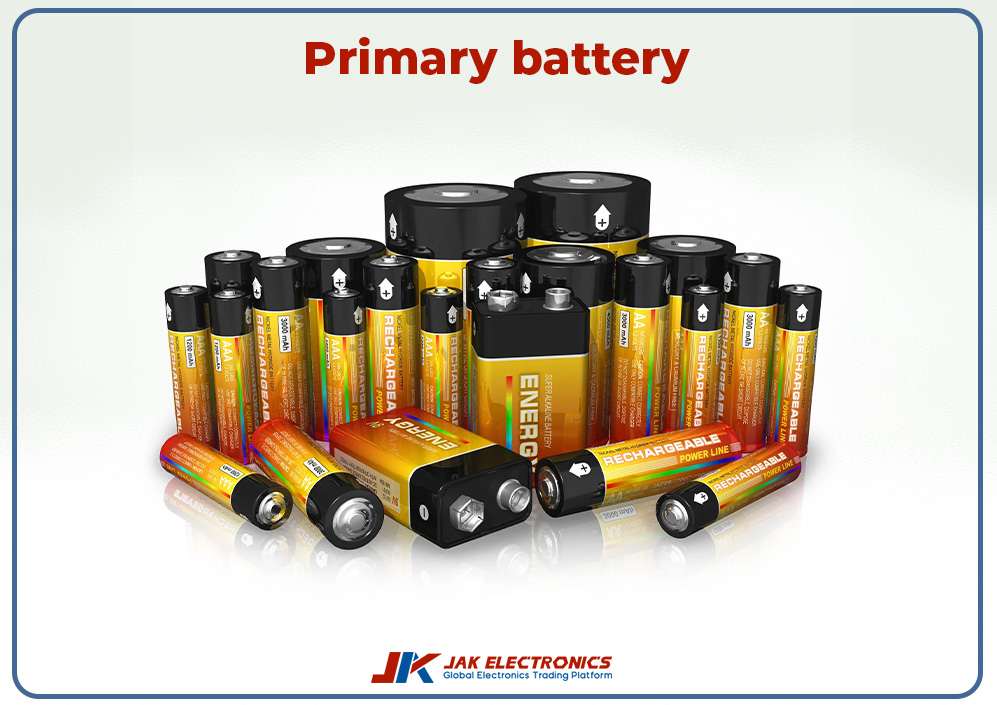
Secondary battery:
Secondary batteries are designed to be used multiple times because they are rechargeable batteries. Once their charging is depleted they can be recharged from an external source and ready to be reused.
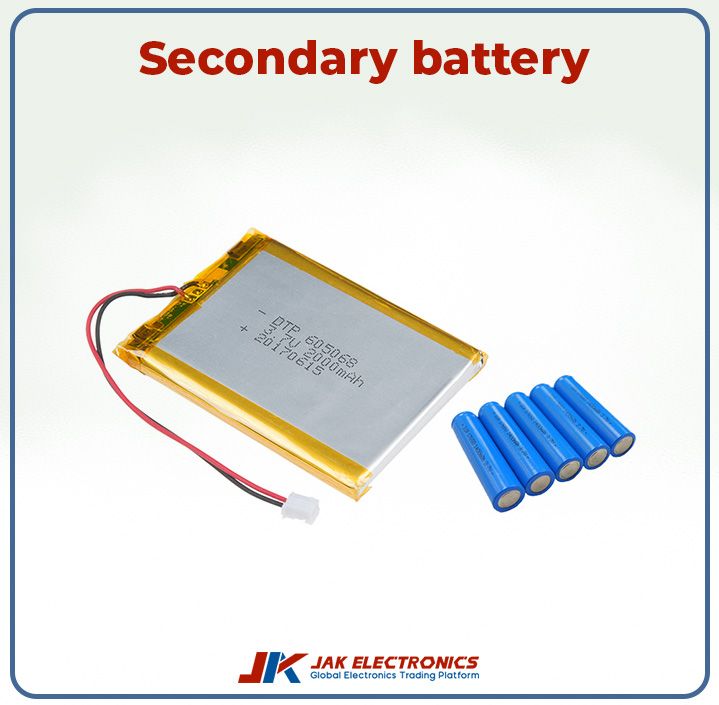
Common types of rechargeable batteries are the following:
Lithium-ion batteries:
They are lightweight and have high density so they are used in vehicles and portable devices like smart watches and laptops.
Nickel-metal hydride:
These are rechargeable household batteries that are used in hybrid vehicles.
Lead-acid battery:
These batteries use lead and lead oxide plates in a sulphuric acid solution to produce electricity. These batteries are commonly used in automobiles. Due to their high power output and reliability, they are used in backup power systems.
Nickel-cadmium:
It uses nickel oxide hydroxide and cadmium as an electrode in an alkaline solution. They are used in emergency lighting systems.
Application of battery:
● They are commonly used in watches, smartphones, laptops, smart watches, cameras, and other portable devices.
● They are used to power electric and hybrid vehicles without burning fuel.
● Used in makeup power system.
Crystals and oscillators:
Crystals are passive electronic devices that produce periodic oscillating output which has a narrow frequency passband. Oscillators also produce periodic oscillating output in sine waves or square waves. In digital devices, both crystals and oscillators are used together.
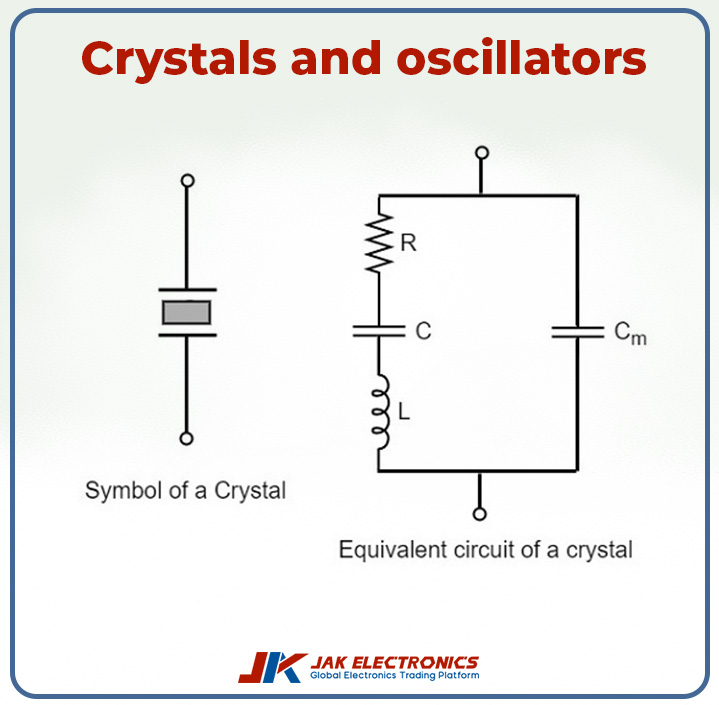
Mechanism of Crystal oscillators:
They use a piezoelectric effect mechanism for their functioning. While applying an electric field, when mechanical stress is applied on a certain material generates an electric charge which causes the material to vibrate.
Quartz crystal is highly efficient so it starts vibrating with a specific frequency when placed in an oscillating circuit. Its frequency is determined by the properties of the material and the dimension of the crystals. Crystals can generate stable signals on their natural resonant frequency. This vibration due to oscillation produces AC which is fed back into the circuit. This feedback loop functions to sustain the oscillations.
Mechanism of Crystal oscillators:
They use a piezoelectric effect mechanism for their functioning. While applying an electric field, when mechanical stress is applied on a certain material generates an electric charge which causes the material to vibrate.
Quartz crystal is highly efficient so it starts vibrating with a specific frequency when placed in an oscillating circuit. Its frequency is determined by the properties of the material and the dimension of the crystals. Crystals can generate stable signals on their natural resonant frequency. This vibration due to oscillation produces AC which is fed back into the circuit. This feedback loop functions to sustain the oscillations.
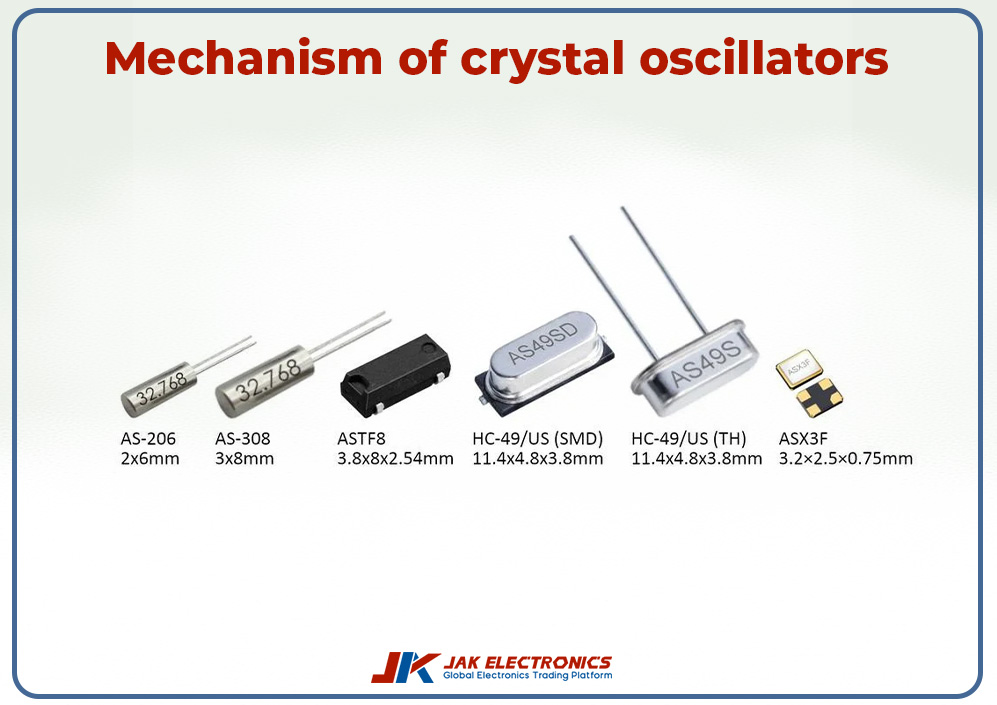
Stability and Accuracy:
Crystal oscillators are highly stable. Environmental factors like variation in temperature, Q factor, voltage, etc cannot affect the resonance frequency of crystal oscillators
A high Q factor increases its stability and also reduces energy loss. Essential in accurate timing because it produces signals with low-phase noise.
Types of Crystal Oscillators
Crystal oscillators have many types each of which is essential for specific functioning. Some types are mentioned below.
Fundamental mode oscillator:
These crystals function at the crystal's fundamental frequency. The physical dimension and structure of the crystal are used to determine its frequency, which provides stable and accurate signals. These oscillators are used in applications that require accurate time like in clocks, phones, computers, and communication devices.
Overtone oscillators:
Overtone crystal uses a crystal’s higher harmonic frequency instead of the fundamental frequency. In this way, they get higher frequencies with small-sized crystals. They are used in applications where high frequency signals are required such as radio communication frequency and still maintain stability and accuracy.
AT-cut and BT-cut crystals:
They are cut in two orientations to get different temperature stability and frequency characteristics.
AT-cut crystals:
They are efficient over a wide temperature range which makes them ideal in general-purpose applications like clocks and communication devices. They provide excellent frequency stability and minimal temperature-related drift.
BT-cut crystals:
They are more temperature sensitive and optimize for stable high-frequency performance but only in a narrow temperature range. They are used in telecommunication applications because they provide high-frequency reliability.
Applications of Crystal Oscillators:
● They are used in communication devices to maintain frequency control like in radios.
● They are essentially used in accurate time-keeping devices like clocks, watches, computers, phones, etc.
● They are used in navigation systems where precise timing is necessary with accurate positioning.
● They are highly used in automotive technology.
● They are efficiently used in microcontrollers, processors, and consumer electronics.
● Essentially used in medical equipment.
So, that was all for today. In conclusion, understanding the basic electronic components and their working is a crucial step for anyone venturing into the electronic field study. There are two basic types of electronic components: active components and passive components. The resistor, capacitor, and inductor are the most fundamental building blocks of electronic circuits. We have discussed most of the basic electronic components and I am sure it was a helpful study for you.







